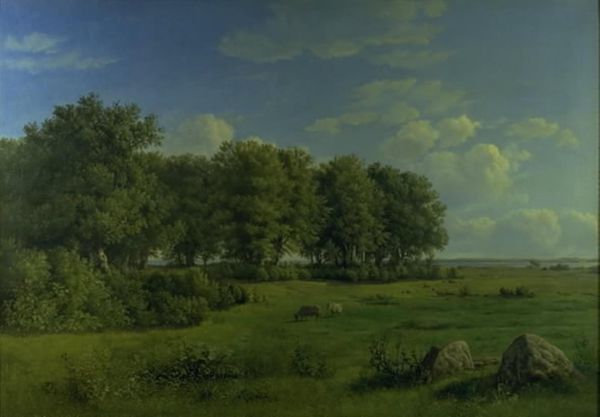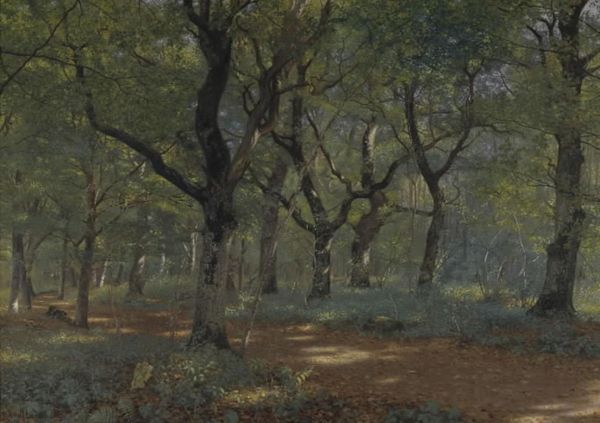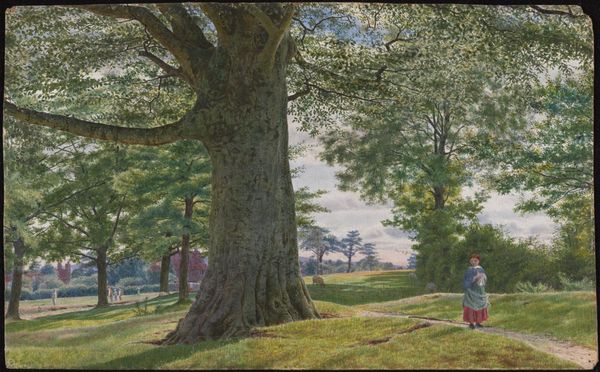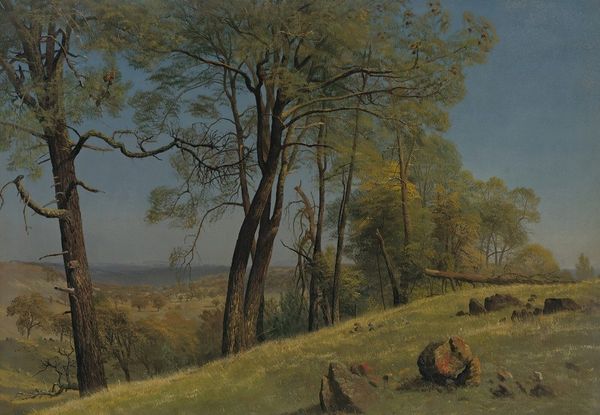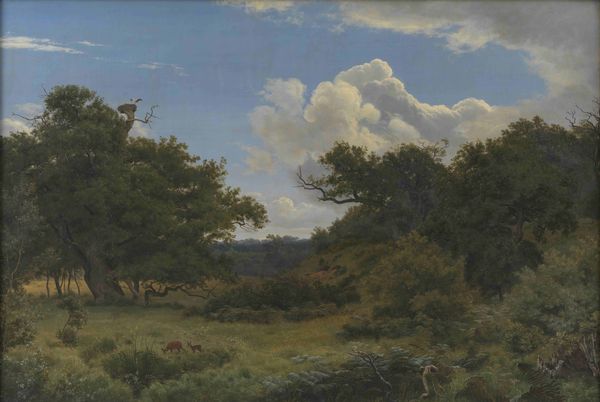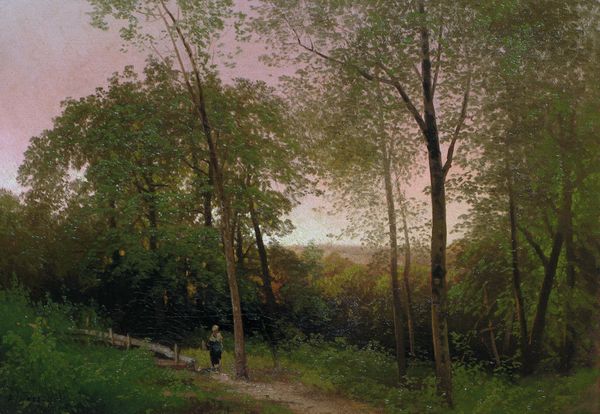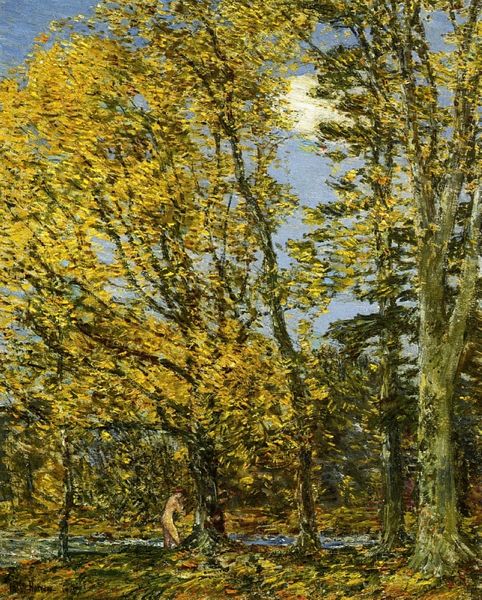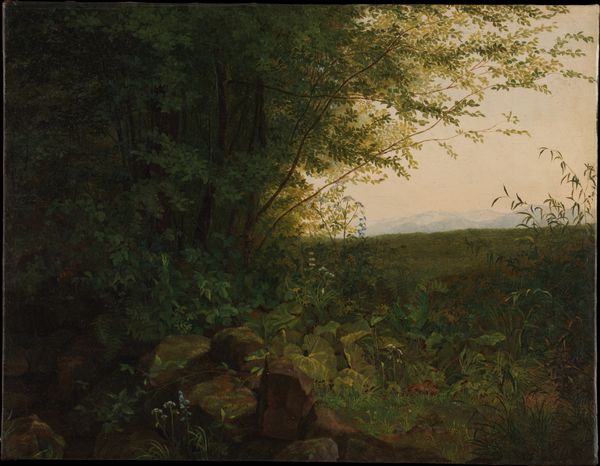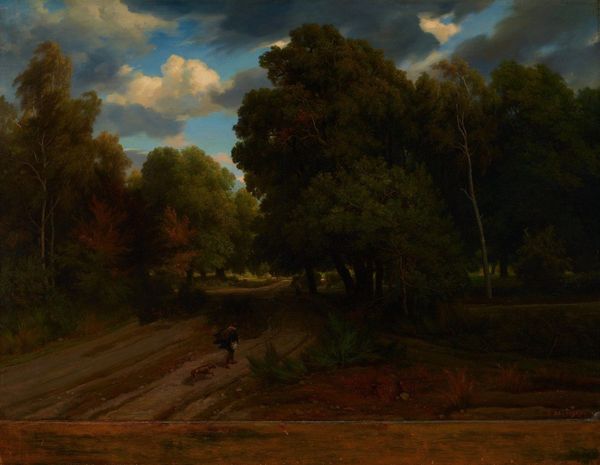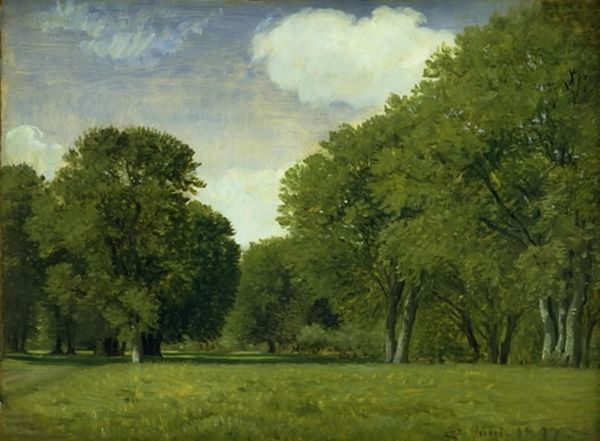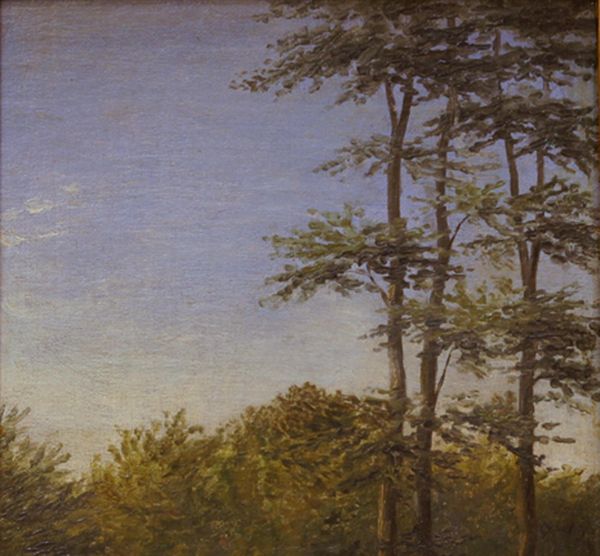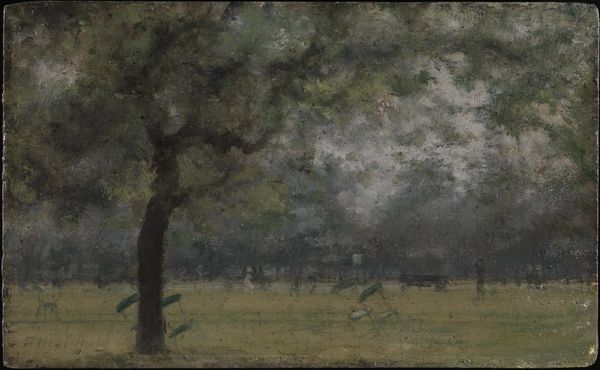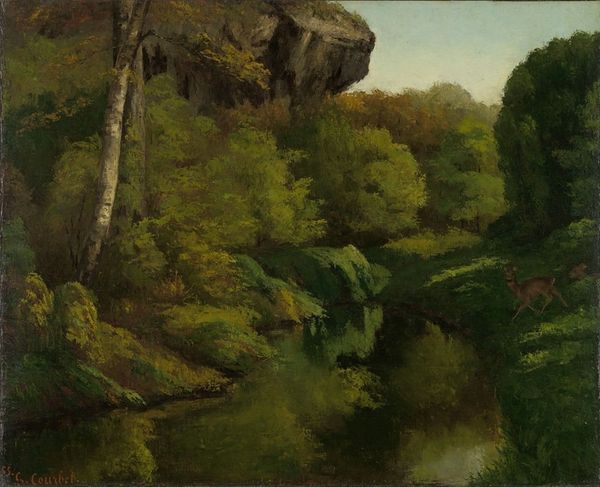
painting, oil-paint
#
painting
#
oil-paint
#
landscape
#
romanticism
#
botanical art
Dimensions: 52.5 cm (height) x 60 cm (width) (Netto)
Curator: Heinrich Buntzen painted “Et skovparti i Charlottenlund. Aften” or “A Forest Scene in Charlottenlund. Evening” between 1818 and 1831. What strikes you most about it? Editor: Immediately, the atmosphere. There's a serenity in the composition. The gradations of light filtering through the leaves, the soft colour palette, it all points towards the romantic's fascination with nature. Curator: Absolutely. It is interesting to think about how the Danish Golden Age painters like Buntzen navigated the political landscape, right after the Napoleonic wars. National identity became crucial, and Romanticism, in its way, helped build that identity by turning towards nature and the local landscape, establishing an emotional bond between the people and the land. Editor: Precisely! This isn't just a depiction of a forest; it’s about invoking feelings. The light, so carefully rendered, illuminates a lone figure on the path. A wanderer almost swallowed by the scale of the woods. We get a sense of the sublime through nature. Curator: Indeed. Buntzen shows us how the individual relates to the immensity and timelessness of nature, evoking emotions like awe and perhaps a touch of melancholy. This particular forest was a popular area north of Copenhagen at the time, and a meeting place for the bourgeoisie and academics. Editor: Thinking of form, consider how Buntzen structures the picture plane. The trees form these vertical elements, and then there's the horizontal line of the path, the soft gradations in the blue sky... This guides our eye into the depth of the painting, mimicking the real sensation of walking into a quiet forest. Curator: A walk, perhaps, meant to escape societal pressures and contemplate one’s place in the larger scheme of things. I'm intrigued by the figure within this landscape—is this individual escaping, reflecting, or both? Does this character exist within an increasingly urban Denmark? The setting allows for a reflection upon the complexities of an early nineteenth-century context and experience. Editor: I am stuck on this pervasive feeling of harmony and careful ordering. I think that is why it continues to be affecting even two centuries later. Curator: For me, viewing it through a contemporary lens underscores nature's ever-urgent call.
Comments
No comments
Be the first to comment and join the conversation on the ultimate creative platform.
